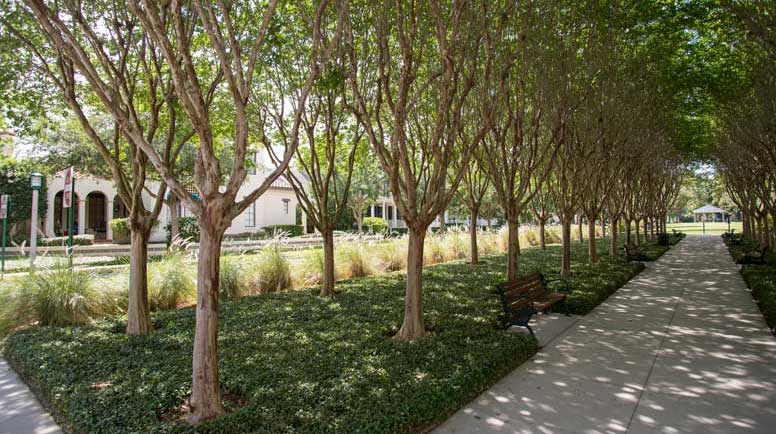5 SECRETS TO AWARD WINNING COMMERCIAL LANDSCAPES
Learn what the best of the best have in common
For trusted expertise and superior results,
find a landscape professional near you.

The psychological value of plants has been well documented. Hospital patients with a view of a landscaped setting reportedly recover faster than those whose view excludes plants. Mental health professionals have been known to use plant care projects to lure patients from the depths of depression and encourage activity in listless patients of all ages.
If landscapes can do this, imagine what they can do for your employees and customers. They, too, might enjoy a moment with some beautiful flowers or a stroll to ease the stress of a particularly trying day. Walking outdoors to the smell of freshly mown grass or a gentle spring rain will always lift spirits after long hours spent indoors.
These benefits alone would make a nicely landscaped property well worth the time and money invested. But that’s only the beginning of the payoff. A well-maintained landscape showcases a property and, depending on who you talk with, can add anywhere from 15 to 20 percent or more to its overall value. Trees especially will increase in value, rather than depreciate like most other improvements.
A Well Maintained Landscape Speaks Volumes
Ask a landscape professional and he or she will tell you that the key to any landscape is keeping it well maintained. Thick, green grass is appealing; straggly brown grass is not. Poorly shaped trees, overgrown shrubs and weed-filled flower beds not only detract from a property’s overall appearance, but they will have a negative impact on its value, as well (Just as surely as peeling paint or cracked concrete detracts from a building’s appearance and value).
Watering, pruning, weed control, and insect and disease prevention and treatment will all be required at some point in the life of each plant. But the small investment in money needed to keep plants in top condition has generous financial and psychological rewards.
Trees Add Value
It’s common knowledge that trees lend incredible value to a property, both from their aesthetic beauty and their pragmatic functions. It’s not common knowledge, however, that these giants have a worth that can be labeled with a price tag. Here are four ways to determine a tree’s value:
Depending on their size, location, species, and condition, trees alone can increase property value. When partnering with other well designed and maintained landscape elements, they can really help your property climb up the value ladder.
Photo courtesy of The Davey Tree Expert Company.
We recently updated our Privacy Policy. By continuing to use this website, you acknowledge that our revised Privacy Policy applies.